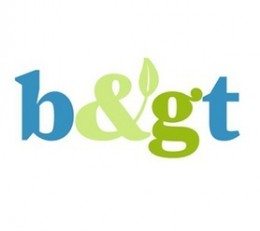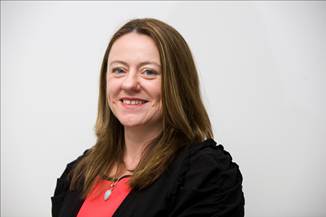

Features
Green Dragon: Stewart Brand
David Tebbutt gets to know this profound thinker, iconoclast and provocateur.
Stewart Brand is a man who discovers paradigms, figures out how to shift them and then does it. Being born in 1938 gave him a certain advantage. While the sixties generation was still finding its feet, he’d already found his. Mind you, it didn’t stop him dropping acid (legally) and hanging out with the Grateful Dead and early hippies. He also secured an ecology degree from Stanford, became a US army officer and participated in the 1968 “mother of all demos”, when Douglas Engelbart introduced things like the mouse, teleconferencing, shared workspaces, word processing, an outliner, hypertext, windows and many other computing aspects that took another 20 to 30 years to become popular.
David Tebbutt gets to know this profound thinker, iconoclast and provocateur.
Stewart Brand is a man who discovers paradigms, figures out how to shift them and then does it. Being born in 1938 gave him a certain advantage. While the sixties generation was still finding its feet, he’d already found his. Mind you, it didn’t stop him dropping acid (legally) and hanging out with the Grateful Dead and early hippies. He also secured an ecology degree from Stanford, became a US army officer and participated in the 1968 “mother of all demos”, when Douglas Engelbart introduced things like the mouse, teleconferencing, shared workspaces, word processing, an outliner, hypertext, windows and many other computing aspects that took another 20 to 30 years to become popular.
Brand has a talent for being in the right place at the right time – if you discount his childhood, that is. He grew up in Rockford, Illinois, the child of an advertising copy writer and a liberal arts graduate. He feared nuclear annihilation and loved nature. In fact, he still talks about the conservation pledge he took as a 10-year-old “to save and faithfully to defend from waste the natural resources of my country – its air, soil and minerals; its forests, waters and wildlife”.
Life in Rockford wasn’t all bad; but the bright lights of California and New York soon beckoned. There Brand fell in with some curious bedfellows in the arts and computer fields as he flitted around his bohemian world, taking it all in before bursting forth with some event of his own.
In 1966 Brand jumbled together people from all his different communities into a giant three-day “happening” called the Trips Festival in San Francisco. Where else? That same year he could be seen sporting (and selling) badges asking: “Why haven’t we seen a photograph of the whole Earth yet?” The following year the ATS-3 satellite took exactly that picture, which quickly became a catalyst for the global ecology movement. For the first time we could see how we’re all bound together on spaceship Earth.
His next milestone was creating the Whole Earth Catalog (tools for self-reliance) in 1968, with the satellite picture on the cover. Six years later he launched Co-Evolution Quarterly, which later became Whole Earth Magazine. In 1984 Brand and Larry Brilliant created a pioneering public online community called the Whole Earth ‘Lectronic Link – the WELL. Brand also ran the first Hacker’s Conference, bringing together the first three generations of computer hackers. And, still in the same year, he wrote the Whole Earth Software Catalog, for which he pulled the largest ever advance for a paperback, $1.3 million. Such was the pace of software development that the book was out of date as soon as it was published.
He’s sidestepped that particular problem with his 2009 book, Whole Earth Discipline: An Ecopragmatist Manifesto, by providing a website for live updates. Brand’s not ashamed to change his mind in the light of fresh evidence, but his espousal of nuclear power, genetic modification, dense cities and geo-engineering in this book has caused many a shock among his fellow eco-travellers. However, he argues his cases carefully and still leaves you to decide what to accept or reject. This is one of his talents: identifying where we’re headed, suggesting ways of getting there and then letting us get on with it while he scoots off to his next project.
Brand splits most of his working time between two organisations he co-founded: The Long Now Foundation, of which he’s president, and the Global Business Network (GBN), a future-looking consultancy where he mainly reviews books. Part of The Long Now plan is a clock that will tick once a year for 10,000 years. A 1/50th scale prototype is in London’s Science Museum; though the real thing will be hidden in a Texas mountain. The Texas clock is a symbol of the need to think in terms of humanity’s whole future rather than just the next quarter, year or lifetime. Just as Brand challenged us with the whole Earth picture all those years ago, he’s again pushing us into a broader view of our existence and a greater sense of our responsibilities.
Over the years, Brand has befriended a heck of a lot of well-known and influential friends. Their lives are intertwined through many of his projects (not all of them reported here). And this is another thing that bugs some of the eco-folk; they believe he’s sold out to his rich mates. He told Blue & Green Tomorrow: “The eco-folk rap is a bum rap, but no surprise.”
When asked what drives him, he said: “I suppose the goal is ‘better world’, whatever that means. Lately, I’ve been thinking it means ‘more options for everybody’.”
As for his approach, he says: “The method is pretty much opportunism. Try a variety of things, pursue the few that work, keep moving.”
A bit like nature really.


 Environment10 months ago
Environment10 months agoAre Polymer Banknotes: an Eco-Friendly Trend or a Groundswell?

 Environment12 months ago
Environment12 months agoEco-Friendly Home Improvements: Top 7 Upgrades for 2025

 Features9 months ago
Features9 months agoEco-Friendly Cryptocurrencies: Sustainable Investment Choices

 Features11 months ago
Features11 months agoEco-Friendly Crypto Traders Must Find the Right Exchange






























